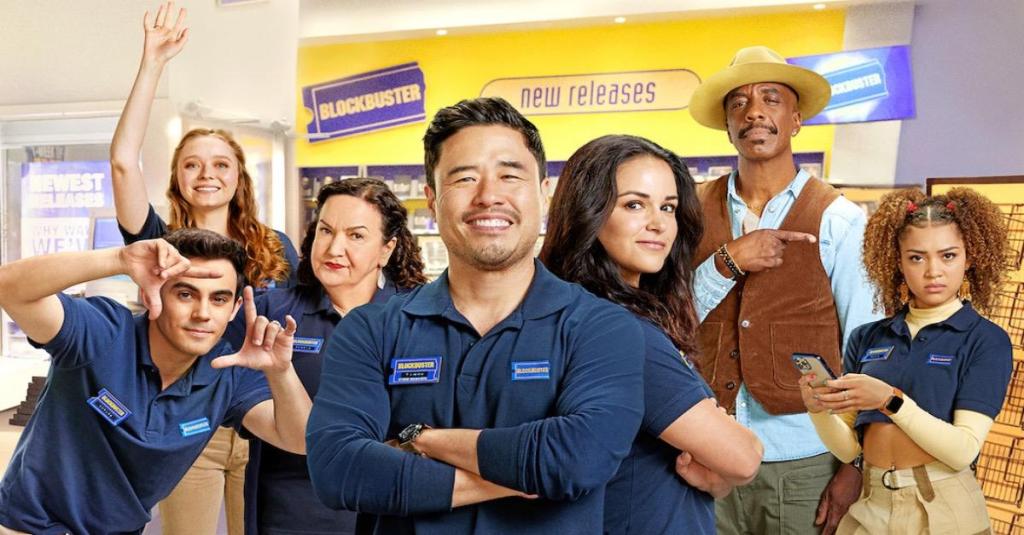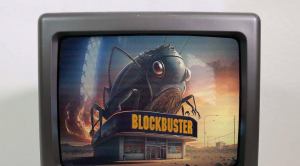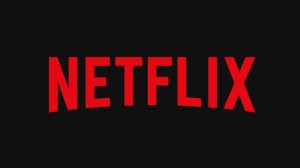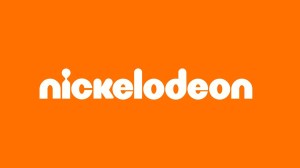Long before Netflix, there was Blockbuster Video. The very first Blockbuster Video Store opened on October 19, 1985, in Dallas, Texas. It was opened by David Cook as a lone video rental store, but the origin of Blockbuster Video actually has ties to two different businesses. One was a failed business by Cook: Cook Data Services, which he founded in 1978 with the intent of supplying software services to oil and gas industries. After that business failed, Cook was approached by his wife with the idea of getting into the video business. Initially, they sought to open a Video Works store with his own specific design, but that was quickly shot down by the company. This ultimately resulted in the birth of the very first Blockbuster Video store.
Videos by ComicBook.com
When the very first Blockbuster Video store opened, it did so with just eight-thousand VHS tapes in inventory. Back then, Cook couldn’t have imagined then how iconic and massive Blockbuster would go on to be in the late nineties and beyond. While his business Cook Data Services hadn’t been the success he had hoped for, his experience with the software services helped Cook to take the video store concept to new heights with the help of databases that aid in tracking inventory. With a model that proved to work, Cook quickly sought to expand and began franchising Blockbuster Video, with stores opening rapidly in new locations. The business grew seemingly overnight and managed to become a regular part of most family weekends.
So, what happened to Blockbuster Video, and how did the once iconic store quickly find itself clinging to life? Well, interestingly, the franchise’s downfall actually began in 1997, and no one even realized it at the time. Although Cook had created a massive empire with Blockbuster Video, revitalizing the rental experience as we knew it, he had also proven that there was always a way to do something more effectively. For many, the appeal of Blockbuster was getting to roam the aisles and see what offerings the store hand on hand, while also picking out snacks to enjoy during movie night. This, however, meant that families would have to make the trek to the store in order to find a new title to check out. Enter Netflix, the home delivery DVD service.
Netflix Was Blockbuster’s Downfall Long Before It Destroyed the Franchise

Founded by Reed Hastings and Marc Randolph on August 29, 1997, Netflix was envisioned as a rival to Blockbuster Video. The service was built on two promises: no more late fees, and no more having to go to the store. The website for Netflix launched in 1998, with the service officially beginning its subscription service the following year. It was a massive upset for Blockbuster Video, who had up until that point, dominated the scene, beating out rivals like Hollywood Video and Movie Gallery. In 2002, Redbox would come to be with the hope of being a viable competitor to both Blockbuster Video and Netflix. That sadly was not the case, though, as Netflix continued to look ahead with the introduction of it streaming service in 2007.
It was the launch of Netflix’s streaming service that would ultimately be the demise of Blockbuster Video. While the home video store did attempt to launch a streaming service of its own, it did so three years after Netflix and failed to acquire exclusive content to truly rival Netflix. Blockbuster on Demand was the video chain’s first venture into streaming, with Blockbuster Movie Pass following in 2011. Cook may have set out to do something new with Blockbuster Video, but he failed to think beyond brick-and-mortar. The moment was created and trademarked, Blockbuster Video’s end was set. In business, there’s always someone who is thinking bigger and better, and in Hollywood – and the video business – it’s vital to consider new ways to stay ahead and on top.
Cook had great ideas for tackling inventory, methods that changed the video business forever. However, Cook and the rest of the minds at Blockbuster failed to think beyond data systems. In a Variety interview with Patty McCord, Netflix’s former chief talent officer, she noted that she realized how closeminded the folks behind Blockbuster truly were. “One time, an analyst asked Blockbuster CEO John Antioco what he thought of Netflix, and he basically said, ‘They are nothing. They are no one. They are a gnat.’ I looked across the room we were in, and there was a chart of our subscriber numbers on the wall. The arrow was going straight up. That’s when I realized, ‘They don’t get it.’”
A lot of what makes Netflix the successful giant it is today is that the business knew what it wanted to be from the get-go. Blockbuster sought to innovate how data systems were used for inventory, but it never grew beyond that idea. While Netflix always had the idea of thinking big, Blockbuster Video had two different ideas of how to run the company, and those ideas never once met in the middle. Ted Sarandos told Variety, “When I first met Reed, he described Netflix almost exactly like it is right now. He didn’t use the word ‘streaming.’ He called it ‘downloading videos’ then, but he was very clear that he thought all entertainment would come into the home on the internet. And this was at a time when no entertainment came into the home that way.”
While Netflix didn’t become the powerhouse, we know it to be overnight, the moment the business was founded in 1997, Blockbuster Video’s death sentence was confirmed. After all, Netflix always knew that it wouldn’t be satisfied simply being a competitor to Blockbuster Video. It always envisioned itself as something more, something much bigger, and Blockbuster Video eventually failed to allow itself to think big enough to become more than another video rental store.









